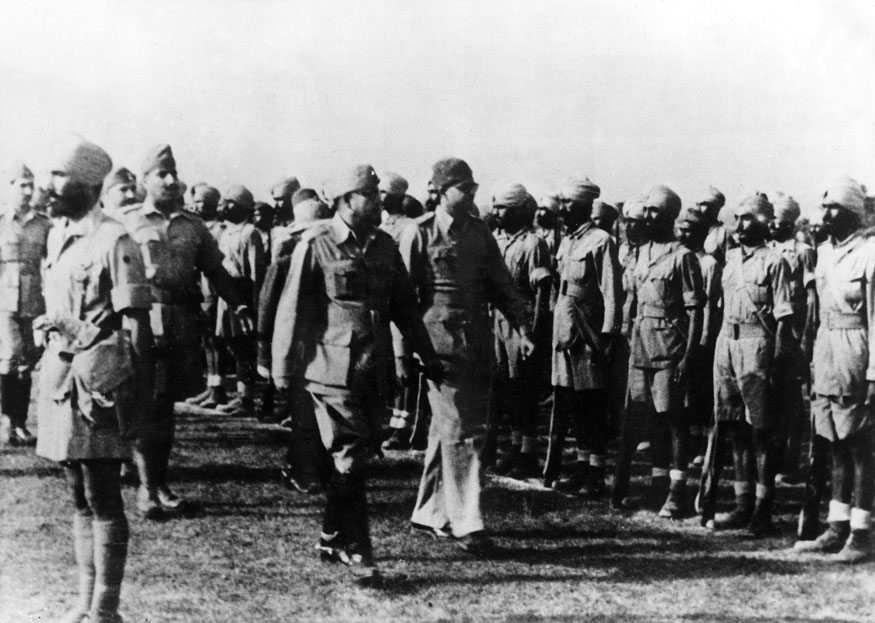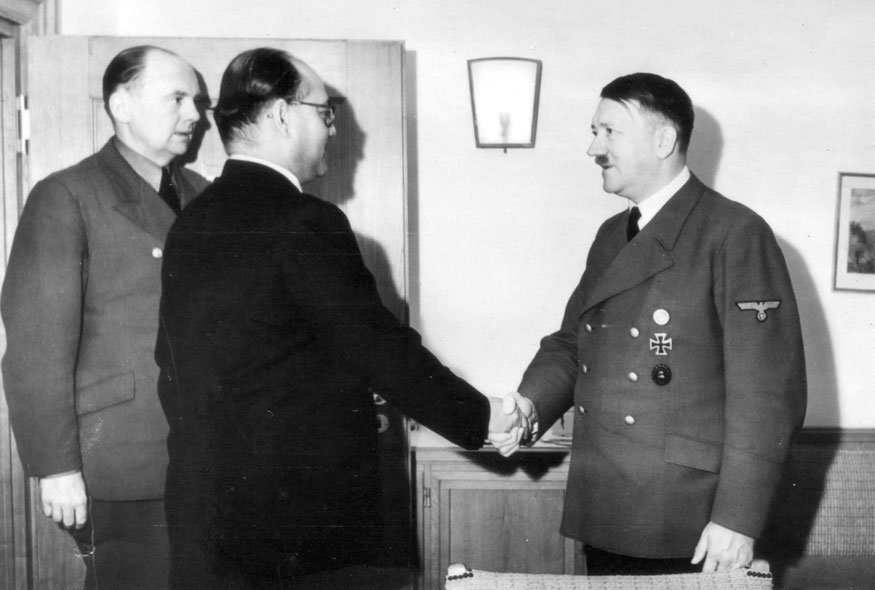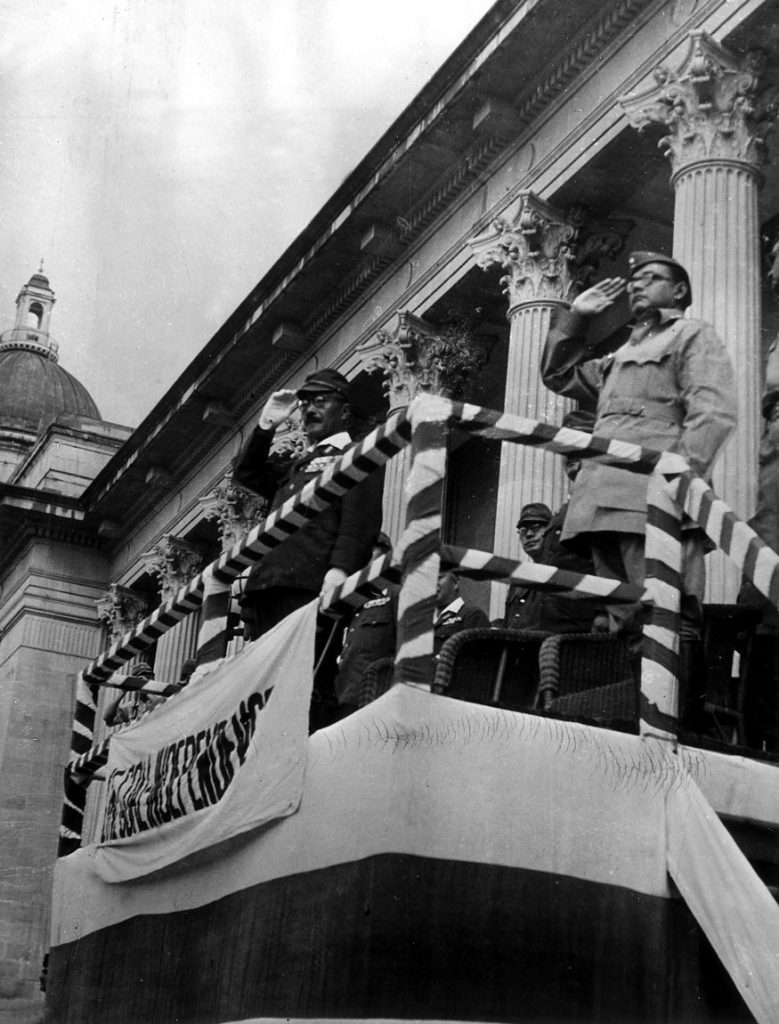
- Subhas Chandra Bose is the one who gave global identity to the Indian leadership. Bose’s struggle for freedom proved to be an inspiration not just for Indians, but also for all Third World countries.
- Bose was convinced that unless India developed international contacts, the Indian nationalist movement would not come out of its static position and would not become a factor in international affairs.
- He built an Indian Army to fight for freedom of India against British, uniting the Indians in several countries and also built relationships with those countries at crucial junctures.
- Bose not only showed the path for freedom but also gave a path towards forging alliances and relationships with countries and leaders while keeping the national interest as paramount.
- His whole life can be seen as one long persistent uncompromising struggle, not only against British imperialism but also against world imperialism.
Two Indians in the 19th century took the world by storm and left an indelible mark on the Indian psyche. While Swami Vivekananda enlightened the world about India’s spiritual and cultural identity, Subhas Chandra Bose is the one who gave global identity to the Indian leadership. Swami Vivekananda inspired generations of Indians to identify their cultural identity and take up the spiritual path towards life and struggle. Bose’s struggle for freedom proved to be an inspiration not just for Indians, but also for all Third World countries.
The Indian freedom struggle and the war of independence led by Bose had a profound impact on several south east Asia countries like Singapore, Malaysia, Burma (Myanmar), with which the modern day India seeks to deepen ties again. Netaji’s status as a freedom fighter, the way he inspired common people and leaders, establishes him as the “hero of freedom” globally. Netaji Subhas Chandra Bose is even today considered the most popular, dynamic & inspirational leader of the Indian Independence Movement.
Such was the charisma of his personality and philosophy that whoever listened to Bose was attracted to him. His famous slogan “Give me blood and I will give you freedom”, awoke the entire country and his popularity skyrocketed and he became “Netaji” to the general public. His popularity was not limited to India and people beyond India’s borders also developed a fascination for him. Heads of states of important countries stood by him and Netaji lit the fire of the freedom struggle beyond India’s shores.
However, much before Netaji built the presented the Azad Hind Fauj (Indian National Army) with 60,000-strong army as a force to counter the enemies of the country and gave the slogan of “Dilli Chalo” with a new spirit, he had to undergo several struggles both within and outside the country, starting with his growth and disenchantment with the Congress.
Subhas Chandra Bose with Rashid Ali al-Gaylani, Prime Minister of the Iraq (left), as Habibur Rahman looks on, in Berlin. (Image: Getty Images)
In 1938, Bose was appointed as President of the Indian Congress Party but resigned on 28 April 1939. Bose was an advocate of armed resistance against British colonialism and hence could not come to terms with the ideology of non-violent resistance that Gandhi advocated. Upon his resignation, he formed the All India Forward Bloc on 3 May 1939, in an attempt to bring together various factions to fight Gandhism which he saw as an impractical approach towards freedom. His fight against both Gandhi and the Congress party for 20 months resulted in his removal from the presidency of the Bengal Provincial Congress Committee and was also banned from holding any elective office for three years.
In March 1940, Bose convened an Anti-Compromise Conference at Ramgarh in Bihar under the joint auspices of the Forward Bloc and Kisan Sabha, and by June of that year, was demanding the establishment of a Provisional National Government in India. Bose was arrested again on 21 July 1940, and he went on a hunger strike, demanding his release, which came only in December 1940.
Despite strict surveillance, Bose managed to escape under the guise of an well educated Muslim gentleman. He left British India behind and had to endure a tough journey through a rugged trek, making way through steep paths in tribal territory, riding on mules, trucks and tongas along the way and finally reaching the Afghan capital of Kabul by January 31, 1941.
Support of NRIs in Europe
The Sinn Fein movement in Irelan against Britain inspired Bose as it had inspired earlier Indian revolutionaries. He came to the conclusion after long discussions with other leaders that India would never be able to win freedom without calling on foreign help. He was convinced that unless India developed international contacts, the Indian nationalist movement would not come out of its static position and would not become a factor in international affairs. He believes that the key to India’s freedom lay in forging alliances with Britain’s enemies.
With the help of the Italian embassy, and travelling under the name of Orlando Mazzotta, he reached Germany via Moscow. There he recruited Indian prisoners-of-war in Europe and north Africa to form the Azad Hind Fauj to fight for India’s freedom. Bose stayed in Berlin for almost two years, trying to get the Germans, Italians and Japanese to publicly declare their support for Indian independence, and create an NRI centre of resistance to British rule. He even raised a 4,000-strong Indian Legion in the German army from among the Indian Prisoners of War captured by the Italians and Germans. Inspired by his leadership, his followers in Berlin honoured him with the name Bose Netaji, acknowledging his stature as a leader.
Many historians, scholars and journalists over the past two decades have written about the warm and cordial reception that Bose received in Nazi Germany. Italy and Imperial Japan too had accorded him the support to the cause of Indian Independence. Both Hitler and the leaders of Italy had very poor opinions about Indians in general and Indian freedom movement in particular. Indian Independence meant nothing to Hitler and he believed that Indians deserved to be ruled by others and could not possibly become independent within the next hundred years.

Subhas Bose expected that Germany being the enemy of Britain would help advance the cause of Indian Independence. Subhas then prepared a memorandum in April-May of 1941 to the German Government pointing out why the Axis Powers should support the cause of Indian Independence. In that memorandum Subhas had insisted that Hitler’s Germany must recognize his “Free India Government” and promise to respect Indian Independence in case of Axis Victory. While Germany did not give any assurance, Bose was forced to seek the support of the Japanese.
The attitude of Imperialist Japan was somewhat better than the Germans and the Italians because Prime Minister Tojo recognized the Azad Hind Government at an early date after 21 October 1943. But the Japanese army and many of their commanders were extremely distrustful of the INA. Many years later Major General Shah Nawaz had written that the INA could have captured Imphal but that they were unable to succeed due to the fact that the Japanese High Command let them down.
In March 1945, when Aung San and his AFPEL had started the anti-Japanese resistance struggle in Burma (Myanmar), the Japanese wrote to Subhas Chandra secretly that he with his INA should now attack Aung San and his forces. Subhas Chandra bluntly refused saying that he differed with Aung San but his INA would never take up arms against freedom fighters of another country. This showed the principled and courageous stand that Subhas Chandra Bose adopted in the fight against the colonial forces. His principles inspired his rank and file and this was evident when ten brave officers of the Indian Legion in Germany refused to fight the Soviet forces as mandated by Bose and instead preferred death by a Nazi firing squad.
South-East Asia as the Platform for freedom struggle
As Europe moved towards war in the late 1930s, Bose began to realise that India’s great chance for independence lay in seizing upon Britain’s weakness and striking at the basis of the Indian Empire while Britain was involved elsewhere.
When Singapore which was under the British occupation fell to the Japanese on Feb 15, 1942, Bose made his first open broadcast to India proclaiming the imminent freedom from the colonial force. He said, “This is Subhash Chandra Bose speaking to you over the Azad Hindi Radio…the fall of Singapore means the collapse of the British Empire… and the dawn of a new era in Indian history.” Bose now planned to return to Asia and take some concrete action towards freeing India. He felt that the Japanese were far more supportive of India’s cause than the Germans. On Feb 9, 1943 Bose and his close aide, Abid Hasan, boarded a German submarine (U-Boat) to reach Japan.
On May 6, the submarine dropped them at Sabang, Indonesia. After a few days, Bose flew on a small Japanese aircraft stopping in Malaysia, Vietnam, Philippines and Taiwan on his way to Tokyo. From there he reached Singapore on 2 July 1943 at the invitation of revolutionary freedom fighter Rash Bihari Bose. Here, he was appointed as the President of the Indian Independence League in East Asia. On 21 October 1943, Subhas Chandra Bose proclaimed the formation of the Provisional Government of Free India at Cathay Cinema Hall. Two days later, he declared war on Britain.

With help from the Japanese, he re-organised and rejuvenated the Azad Hind Fauj. He lobbied aggressively for funds in Malaya and other parts of Southeast Asia and launched a recruitment drive for the Azad Hind Fauj. Tapping into the widespread discontent of Indian army personnel in Malaya, especially over the way British officers had abandoned them during their retreat from Singapore, Bose was able to recruit many British Indian troops to the Azad Hind Fauj.
On 14 April 1944, he led the Azad Hind Fauj on an offensive against the British in India. Crossing the Burmese border, he planted the Indian National tricolour flag at Moirang, Manipur. Though the battle was half won, hoisting the tricolour was a symbol of resistance and claiming Indian soil from the British. However, the offensive did not succeed in taking Kohima and Imphal and the troops retreated to Burma due to lack of supplies of arma, ammunition and food to take on the British troops. Bose left for Singapore via Bangkok on 24 April 1944.
Though the offensive did not achieve the intended result, he achieved something unbelievable and unimaginable during British Raj. He built an Indian Army to fight for freedom of India against British, uniting the Indians in several countries and also built relationships with those countries. Though Indian POWs formed the backbone of INA, the Army drew its power from Indians living in South East Asia. Around 3 million Indians gave the ultimate sacrifice for Indian Independence.
These freedom fighters who became part of Indian struggle against the British on foreign shores, were in fact sent to South East Asian countries under British occupation as farm labourers by British. Most of them were underpaid and denied even basic rights. In Burma, Indians had migrated from almost all provinces (Bengal, Bombay, Rajputana, Madras etc.) of India. When Japan conquered the South East, the migrant Indians were left stranded. Around the same time, Netaji arrived in South East Asia to take control of Indian National Army. Soon, he became the most popular leader among Indians. He received warm hospitality from the South-East Asian masses. A Malaysian freedom movement leader Ahmad Sani was so impressed with Netaji that he changed his name to Ahmad Boestaman, in honour of Bose.
The Japanese victory over Russia in 1905 and their subsequent war victories in the beginning of the 2nd world war had given hopes to migrant Indians that the colonists could be defeated. Even though they were wary of the Japanese methods, they had immense belief and hope in Netaji who they were sure would not fall prey to Japanese machinations. They donated huge amounts of money to the cause and thousands of ladies donated all their jewellery (including sacred Mangalsutra) for the freedom of India. Though Indians in South East Asia were divided on the basis of religion, caste, language etc., they were all united under the leadership of Netaji.
Before the 2nd world war, Netaji was perhaps more popular than Gandhi and he was the main threat for British in India. A CIA report in 1945 says Netaji was the most energetic and persuasive leader of India. It was a very common sight to see a picture of Netaji hanging with Gods in the homes of Indians in South East Asia. It was said that while searching the houses if Japanese soldiers would see pictures of Netaji, they salute the picture & leave the house without harming anyone.
INA drew its men mostly from Indian POWs who had surrendered to Japan in Singapore, Malaysia, Burma. Local Indian volunteers also played a key role. Local recruits helped Indian National Army to swell to 3 divisions. Even women joined INA where a special regiment was formed named as “Rani of Jhansi Regiment”. It was only due to the leadership of Bose that an Indian army formed 3000 KMs from India with help of Indian POWs and migrant Indian population, fought bravely with whatever resources it had which was no less than a miracle. This was perhaps the most defining movement towards the Indian history in the 20th century. An Indian Army was fighting for India for the first time after the 1857 war of Independence.
Fight till the last and beyond
While in Singapore, Bose received the devastating news of the Japanese surrender on 12 August 1945. Since their occupation of Southeast Asia, the Japanese had supported Bose’s fight for an independent India, albeit for their own agenda. After the Japanese surrender, Netaji addressed a large gathering in Singapore & said: ”Even if the three million Indians in East Asia should perish to the last man, the sacrifice was nothing as compared to the freedom of crores of our sisters and brothers at home for many many years to come”.
On 17 August 1945, Bose left Singapore for Bangkok and later Saigon by plane. In Saigon he boarded a Japanese bomber in the expectation that the Japanese would extend facilities to him to reach the Russian-occupied Manchuria as they had promised. Bose was supposed to make contact with the Soviets to see if they would support his fight against the British. However, the plane crash in the vicinity of Taihoku (Taipei) airport at 2 pm on 18 August brought an halt to the plans of Bose. Though it was never fully verified, Bose was declared dead. Since then, there has been much controversy over his death and speculations abound as to whether he was still alive.
A memorial for soldiers of the Indian National Army set up by Bose in Singapore was destroyed by the returning British army in 1945. However, a commemorative icon was later erected at the Queen Elizabeth Walk marking the site of this memorial.
The personality of Netaji and the military battles of INA have played an important role in the independence of India. The main pillar of British rule of India were native Indians. In each battle, the Indian army played the most important role for British whether it was the Battle of Plassey or Battle of Buxar or Anglo-Maratha war or Anglo Sikh war. The local Indians who were serving in the British army were loyal to them as they deemed it as a moral and ethical duty. This was how the British were able to rule over the subcontinent.
The INA broke this very important pillar. Thousands of soldiers who had taken an oath for British King fought against British forces as the love for motherland overcame the oath of a foreign king. Though the majority of Indian soldiers remained loyal to British, the breach of discipline of Indian Army was a very important development. In 1946, sailors of Indian navy mutinied and the British understood that the days of their rule in India were numbered.
Though it is believed that Bose did not live to see the British leave India, we can conclude that he not only showed the path for freedom but also gave a path towards forging alliances and relationships with countries and leaders while keeping the national interest as paramount. Bose was sure that forging alliances and international contacts were paramount for lasting relationships but he was equally convinced that no country could win its independence without an armed struggle in which international support and foreign assistance were both essential. Thus, the life of Bose can be a lesson in forging alliances and crucial relationships as much as it is about freedom struggle and safeguarding one’s identity.
Apart from India’s independence, Bose expanded his ideas towards international brotherhood based on the principles of equality and justice which was at the core of Indian ethos. His whole life can be seen as one long persistent uncompromising struggle, not only against British imperialism but also against world imperialism. Hence, he was clear that though his fight would be for freedom of India, he was longing for the freedom from any kind of foreign occupation for the entire humanity.
References:
- Ayer, S. A. (1997). Story of the I. N. A. New Delhi: National Book Trust.
- Sopan. (Ed.). (1946). Netaji Subhas Chandra Bose: His life and work.
- National Archives of Singapore. (2003). Historical journey of the Indian National Army.
- Subhas: A Political Biography Paperback – February 1, 2006 by Sitanshu Das
- Subhas Chandra Bose, Japan and British Imperialism by T.R. Sareen European Journal of East Asian Studies
